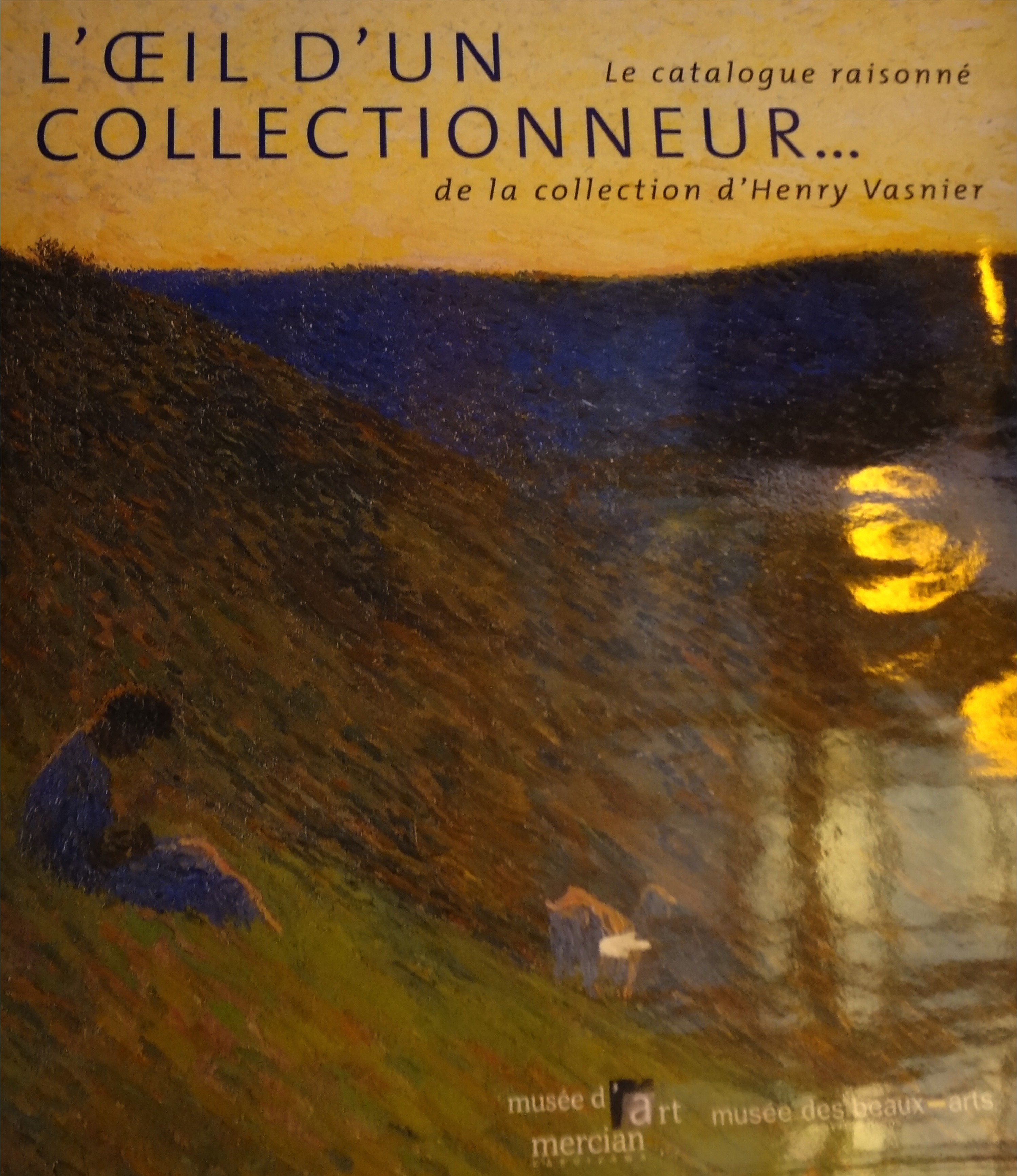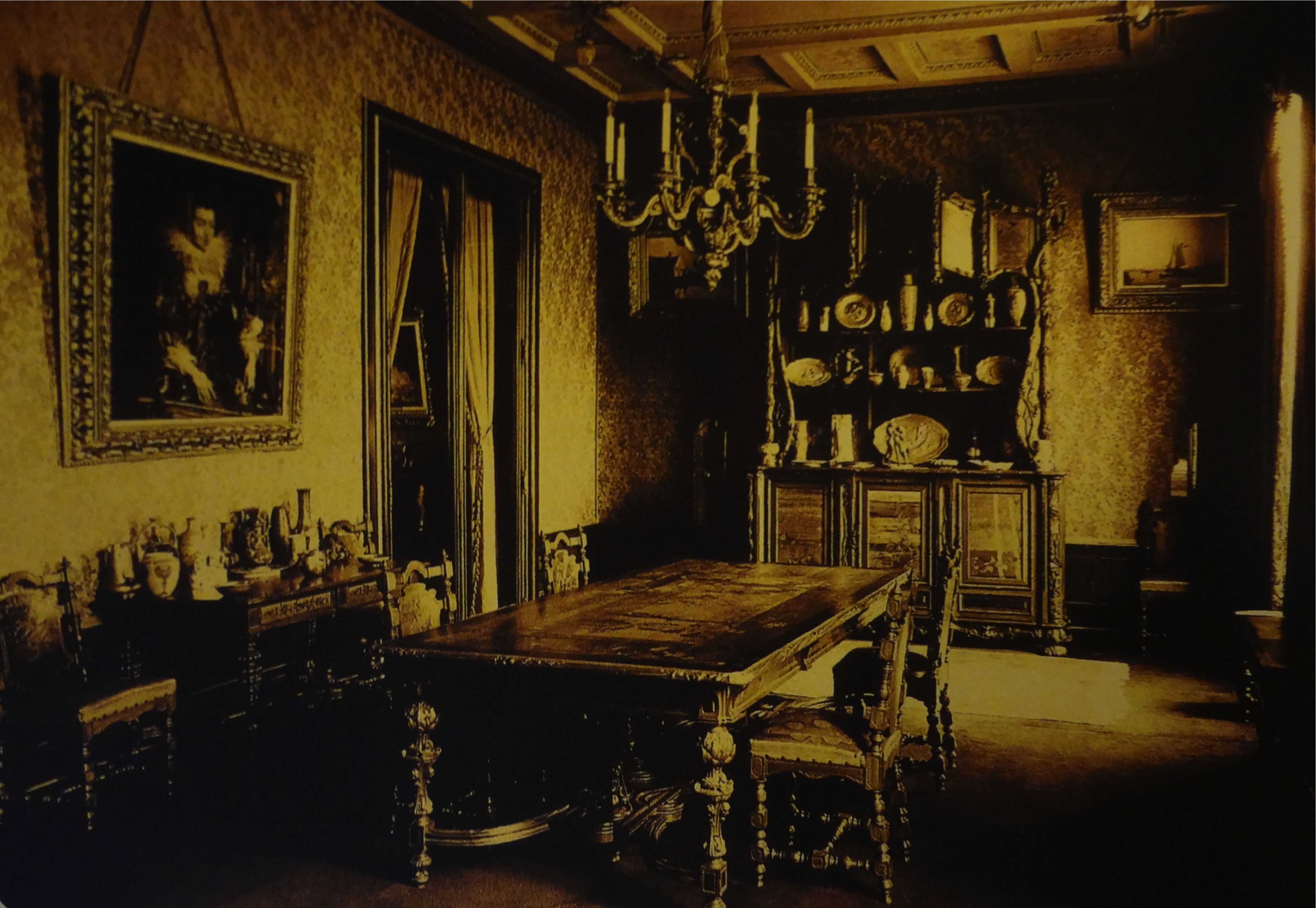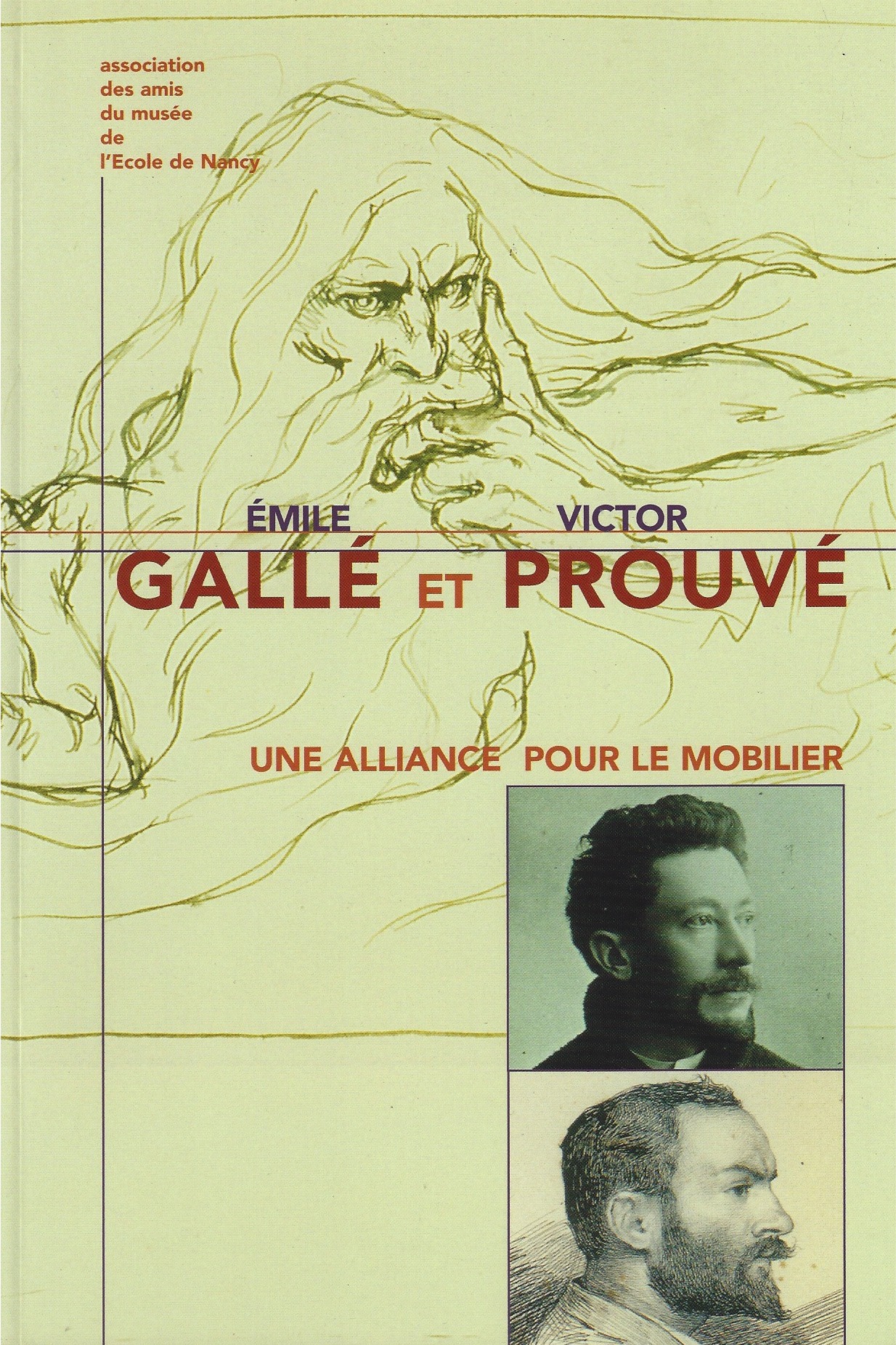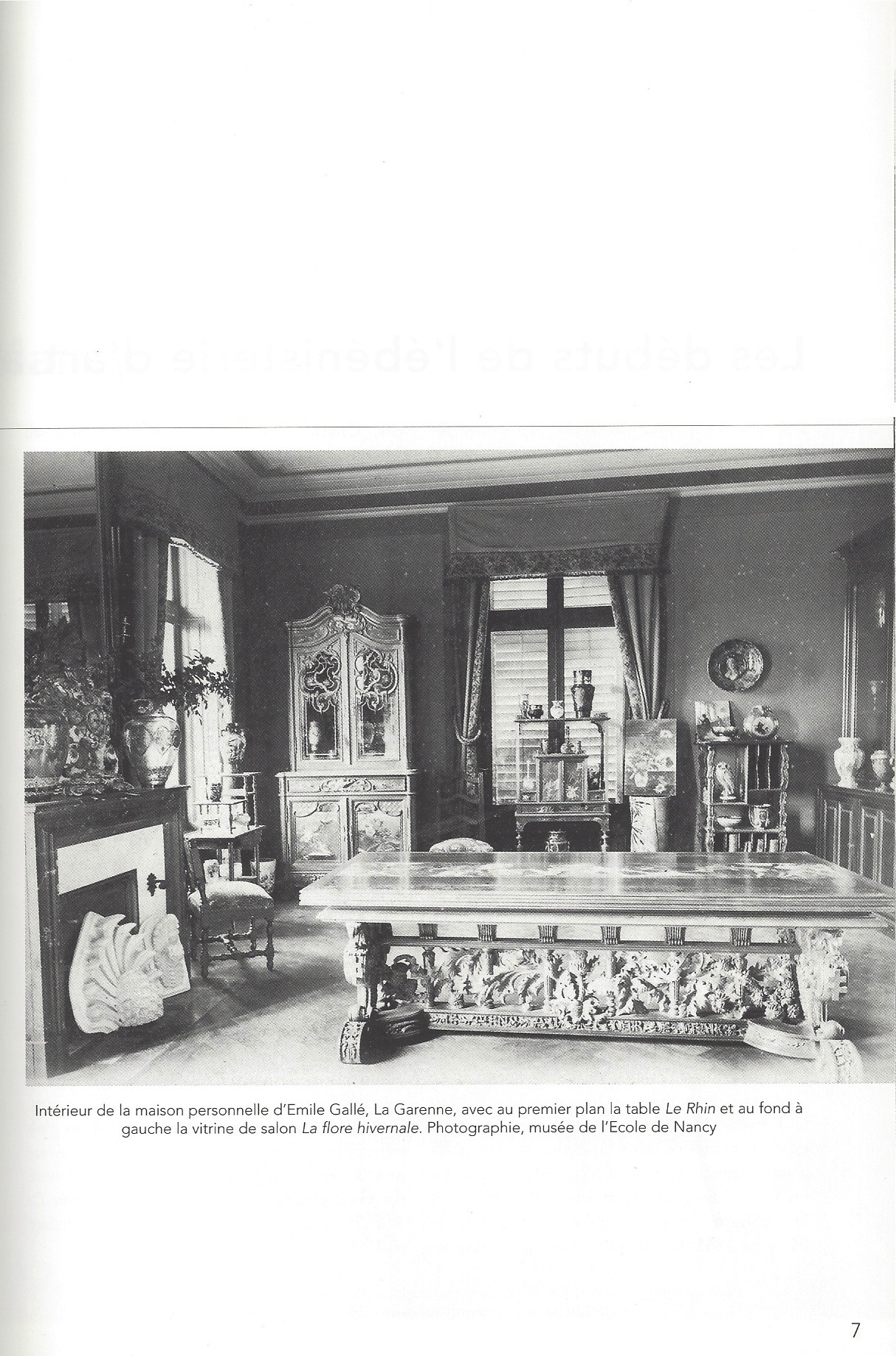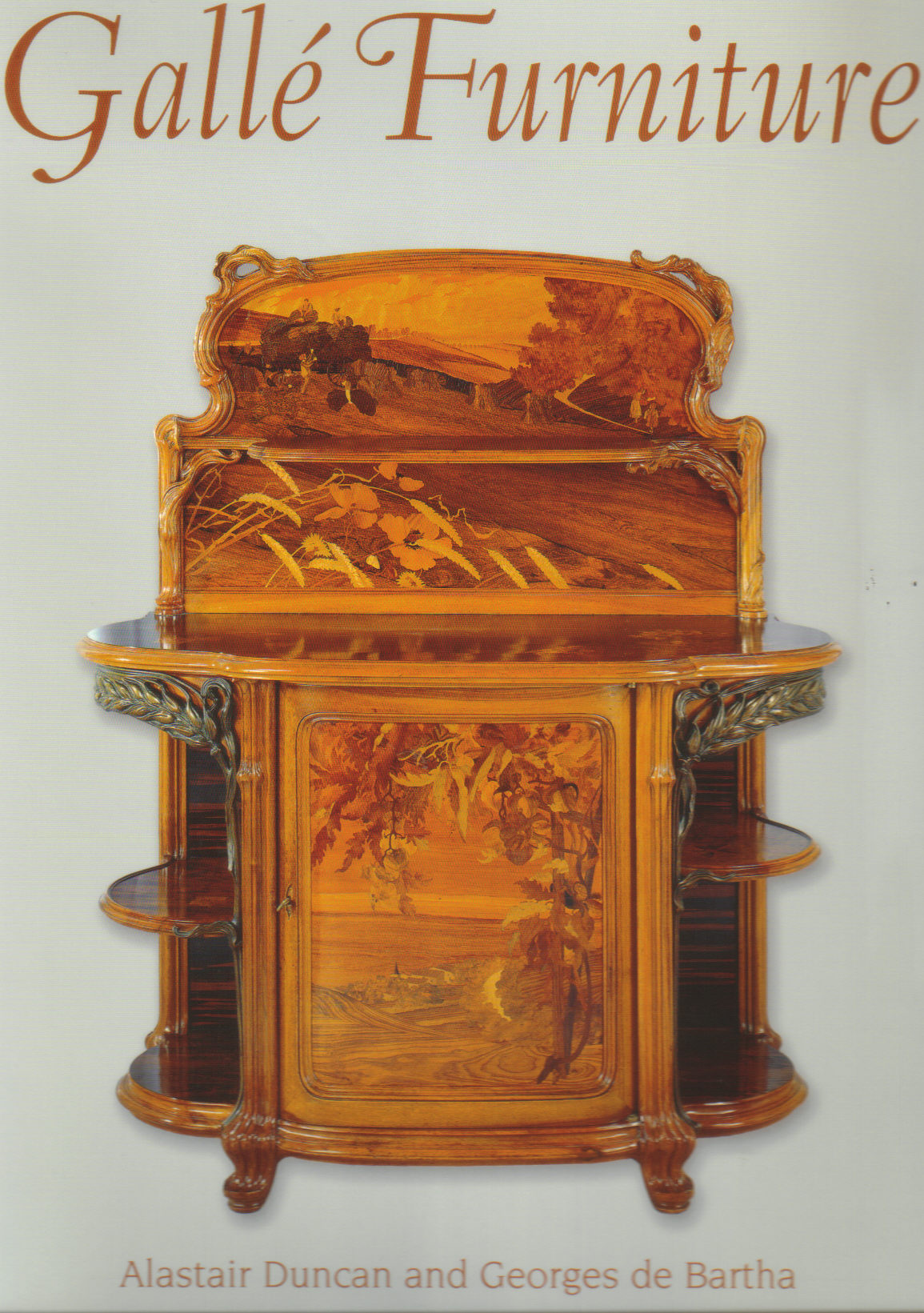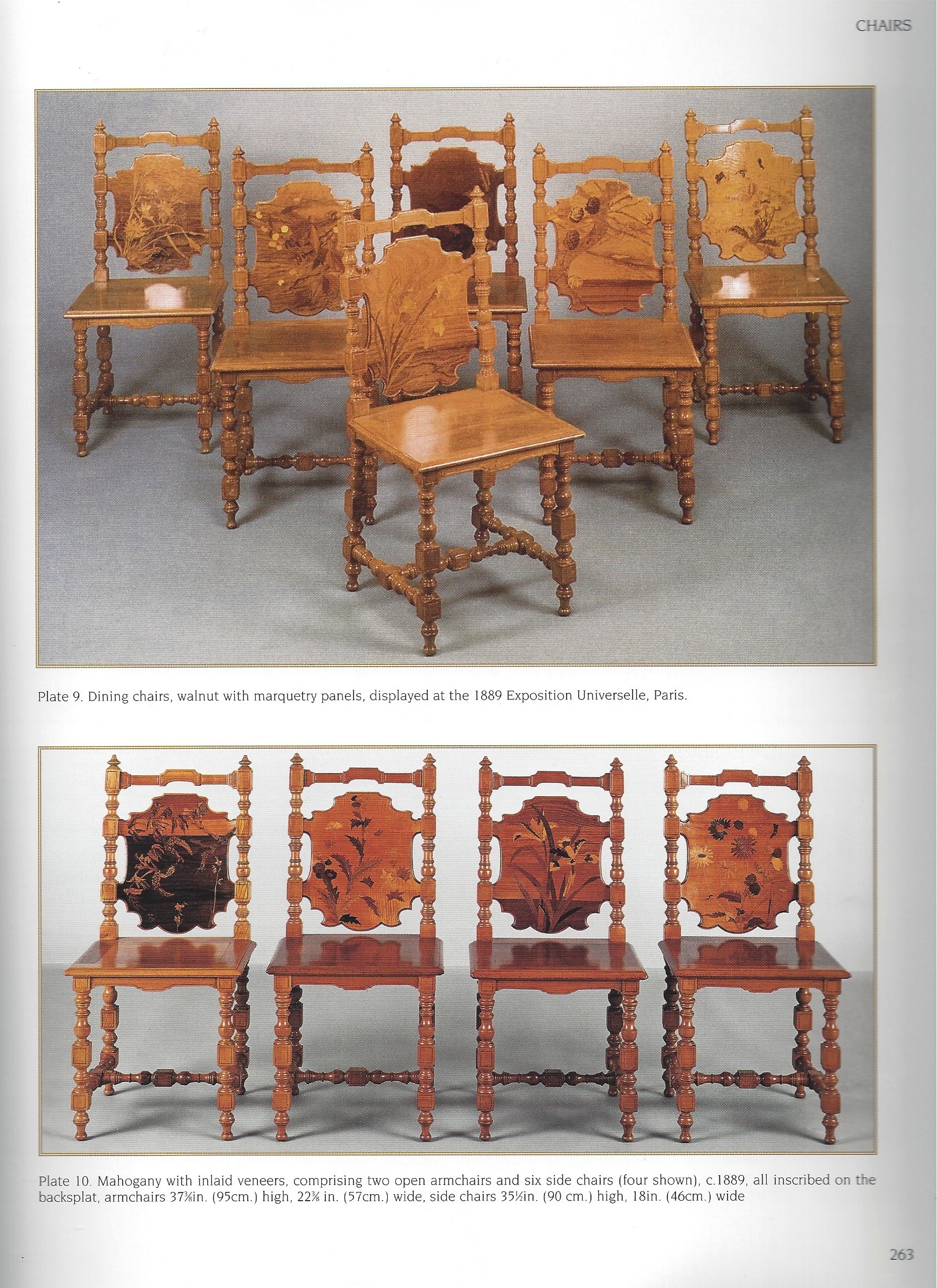A Pair of Elm, Wild Cherry, Ash, Purpleheart and Fruitwood Marquetry Side Chairs
One chair inlaid with marquetry decoration of poplar branches and Le Peuplier and en giboulée de Mars Nancy and incised Emile Gallé and EG ft with the Cross of Lorraine, the other inlaid with marquetry decoration of daisies and foliage with a butterfly and incised Emile Gallé Nancy ft EG and Exposition 1889 on the reverse
Each chair: 35 ½ in (90 cm) high, 18 in (46 cm) wide
Provenance
Henry Vasnier, Reims
(Possibly) Maîtres Maurice et Philippe Rheims, Paris, 12th June 1964, lot 97
Exhibited
Exposition Universelle, Paris, 1889
cf. Alastair Duncan and Georges de Bartha, Gallé Furniture, 2012, pp. 262-263
Jean-François Brabant, Emile Gallé et Victor Prouvé: Une Alliance Pour Le Mobilier, 2002, p. 7
Born in Nancy in 1846, Emile Gallé left Nancy at the age of 16 to study in Weimar, where he deepened his knowledge of botany and philosophy. In 1867, he joined his father’s crystal and porcelain trade business. He made frequent trips prior to the Franco-Prussian War to Meisenthal, where he became familiar with glass-making techniques. After trips to London, where he visited the botanical gardens, and Paris, where he discovered Islamic and Venetian glass in the Louvre, Emile Gallé settled permanently in Nancy. From 1875 onwards, he became the sole director of the Emile Gallé firm and continued to follow his father’s lead, producing faience and porcelain at the Avenue de la Garenne premises in Nancy and making glass elsewhere. In 1885 he decided to work in wood and added furniture workshops to the Avenue de la Garenne.
Gallé presented his first pieces of furniture at the 1889 Exposition Universelle, which included chairs of this design. His furniture was greatly admired by Henry Vasnier, a partner in the champagne firm Pommery Fils et Cie and a prominent art collector. A period photograph of Henry Vasnier’s dining room at his estate on boulevard Lundy in Reims shows nine chairs of the same design in situ with a dining table, console table and sideboard (illustrated in Philippe Thiébault, op. cit.) These works were exhibited at the Salon of the Société Nationale des Beaux-Arts in 1892-3 as examples of Gallé’s research into naturalism in furniture. Gallé experienced great success during the 1890s. His experience and technical innovations allowed him to revolutionise the art of glass and cabinet-making, creating for his clients masterpieces of marquetry-work, of which the Vasnier commission is one of the finest examples.
Making art accessible was one of the main goals of the Ecole de Nancy, of which Emile Gallé was the leader and first President. Fascinated by the mysteries of nature and the renewal of life, Emile Gallé found inexhaustible sources of inspiration in the plants and insects of Lorraine. An enthusiastic botanist, he participated in the creation of the Central Horticultural Society in Nancy. His motto, ‘our roots are in the depth of the wood, amongst the moss, around the sources’, reveals the connection to nature which was felt by all the artists of the Ecole de Nancy. It was a scientific approach combined with mysticism and a love of the land of Lorraine, symbolised by the Cross of Lorraine, one of Gallé’s favourite motifs. This communion with nature is also found in the aesthetics of Japanese design, which deeply influenced Gallé.
These chairs are in Louis XIII style, with backs inspired by the forms of trees (so dear to Gallé). The model for the design was first exhibited at the 1889 Exposition Universelle in Paris. It was at this exhibition that Gallé first unveiled his ambitions as a furniture maker, complementing his mastery of glass and faience. The chairs perfectly express the stylistic themes that he was to interweave so effectively and consistently through his creations. Unlike his more radical contemporaries, he maintained a respect for traditional furniture forms – in this instance the silhouette is reminiscent of the style of Louis XIII. Yet Gallé’s touch is unmistakeable in the elegant marquetry that takes its inspiration so accurately from nature.
A chair of this design may be seen in a contemporary photograph of Gallé’s home, La Garenne, in Nancy, alongside other emblematic examples of his conceptual and technical skill as a creator of furniture in a new idiom (illustrated Jean-François Brabant, op.cit.).


















